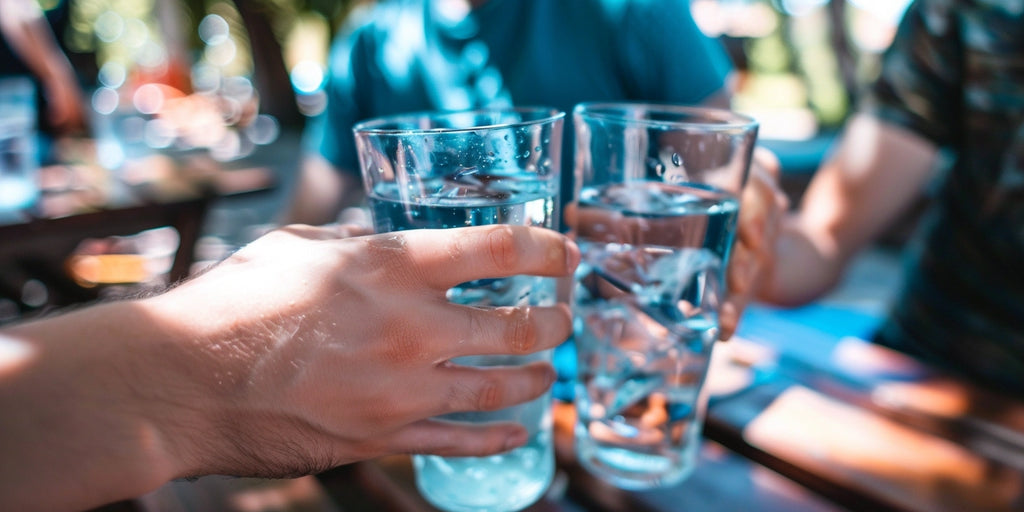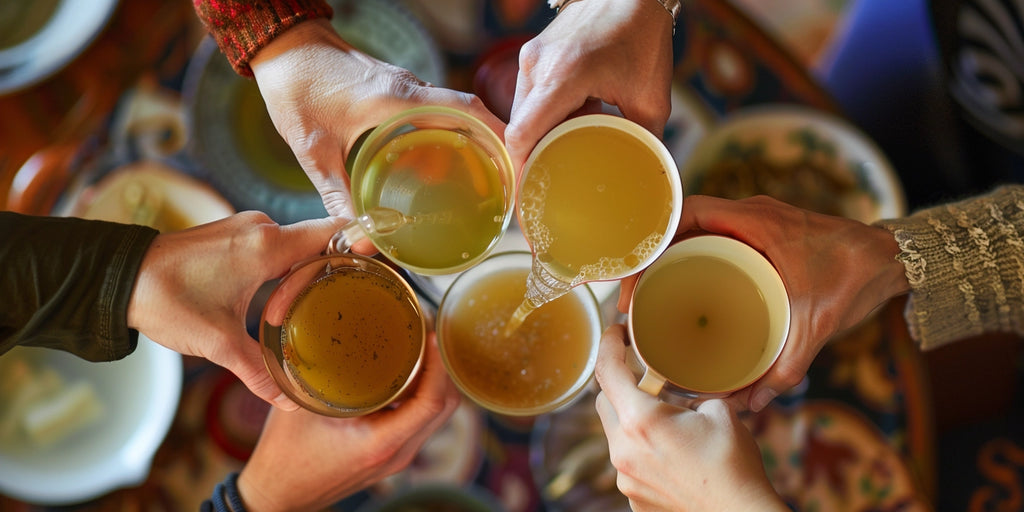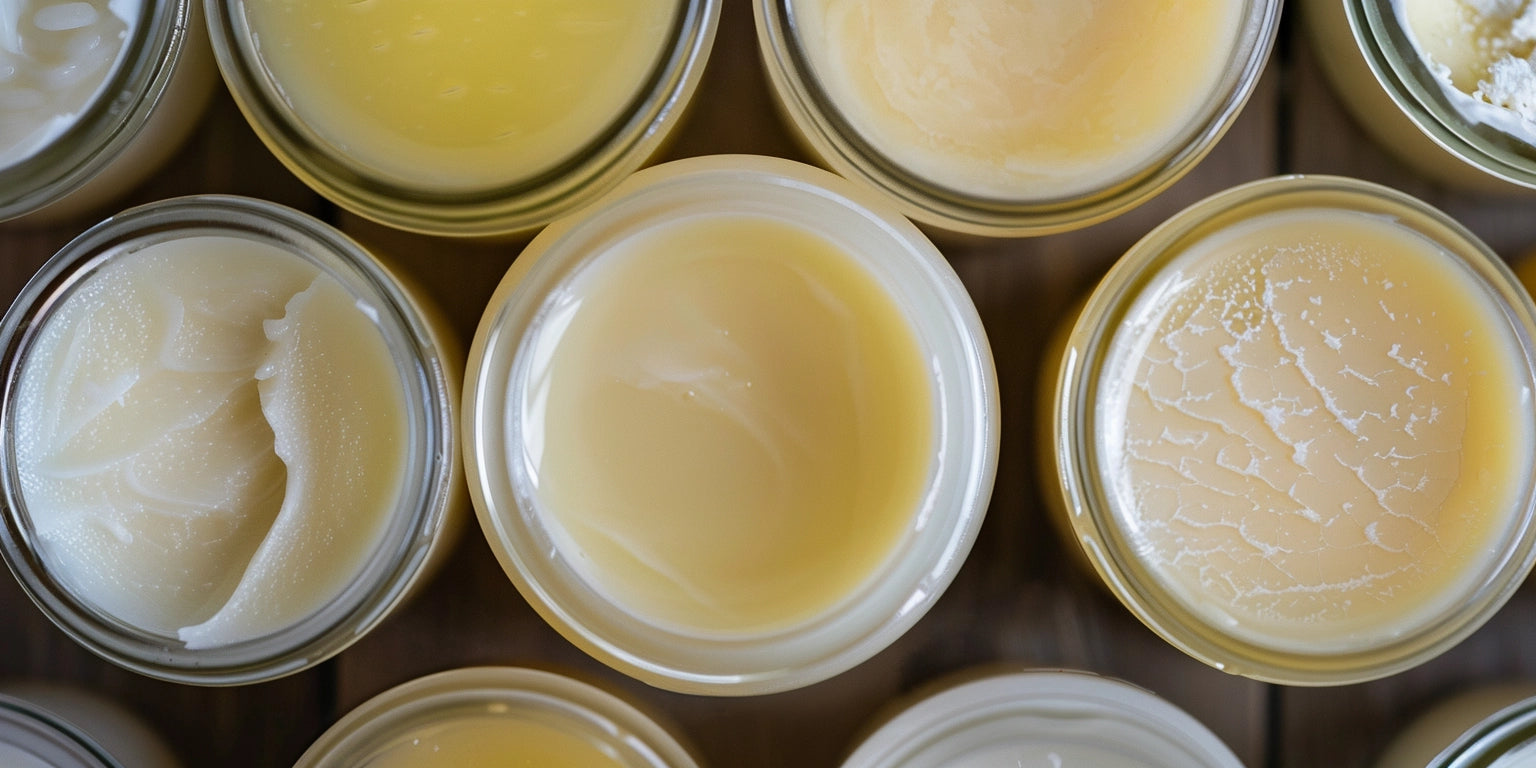Embarking on a clear liquid diet? You're not alone. Many of us have been there, whether for weight loss or medical procedures. This nutrition plan is essentially a liquid-only diet, consisting of water, juice, tea, and other clear drinks.
It's not just about sipping liquids all day though. A sample menu for this diet might include hot tea with lemon juice and a teaspoon of sugar for breakfast, grape juice and consommé for lunch, and apple juice and fruit ice for dinner. Sounds simple, right? Well, it's not always as easy as it sounds.
Surviving a clear liquid diet can be challenging. But don't worry, we're here to help. With the right approach, you can get through this diet while maintaining your energy levels and health. Let's dive in and explore how to survive a clear liquid diet.

Overview of a Clear Liquid Diet
A clear liquid diet is a restrictive eating plan where you consume only liquids you can see through. The items on the menu typically include plain water, filtered fruit juices without pulp, tea, and clear sodas. Gelatin and pulp-free popsicles also make the cut, offering some variety for those following this diet.
Interestingly, while it might be tempting to think of milk or yogurt as clear liquids, they're not suitable for this diet. And although we typically reach for sports drinks when thinking about hydration, their colored variants don't comply with the clear liquid rules.
Breakfast, lunch, and dinner on this diet can comprise a mix of 3 to 5 choices from the approved list. You are allowed to add sugar and lemon to tea, however, for some medical tests like a colonoscopy, your doctor may ask that you avoid red-colored liquids.
You might wonder, why would anyone voluntarily choose to limit themselves to clear liquids only? The truth is, this diet is usually prescribed by doctors for specific reasons.
This diet might precede medical tests or procedures like colonoscopies, sigmoidoscopies, or X-rays. Furthermore, the clear liquid diet is often suggested after certain surgeries, including gallbladder removal and bariatric surgery.
Doctors may also advise utilizing this diet plan for alleviating digestive problems such as abdominal distention, diarrhea, nausea, among others. Besides cleaning out the intestinal tract, this diet assists in maintaining hydration while delivering sufficient vitamins and minerals.
Despite the benefits, embarking on a clear liquid diet isn't something to undertake lightly. Healthy people not under a physician's supervision should not follow this diet beyond 3 to 4 days.
It's worth mentioning that while the clear liquid diet might include bone broth, organic bone broth isn't particularly stipulated. But for those keen on staying as natural and clean as possible with their intakes, opting for organic choices is always a commendable decision.
In the final analysis, being on a clear liquid diet is more than just sipping broths and juices. It's a balancing act – one that requires medical guidance, meticulous choices, and a strong will.
Preparing for a Clear Liquid Diet
Once we've decided to go for a clear liquid diet, preparation is key. We need to take careful consideration to choose our liquids wisely since we're looking for the ones that we can see through. We need to make sure we're staying as nourished and hydrated as possible.
Stocking Up on Clear Liquids
When it comes to clear liquids, we have more variety than we might initially think. We should consider stocking up on items like plain water, fruit juices without pulp (like grape and cranberry juices), clear broths (including bone broth - organic or otherwise), clear sodas like ginger ale, gelatin, and popsicles without bits of fruit or yogurt. Coffee and tea without milk or cream can also be on our list, and we can feel free to add sugar and lemon to the tea.
However, we need to make sure to avoid liquids that we can't see through such as juices with pulp like prune juice, milk, and yogurt.
Planning Your Meals
Once we've stocked up, planning our meals is essential to keep us from feeling too hungry or drained. We'll aim to have a mix of 3 to 5 of the approved items for each meal - breakfast, lunch, and dinner. If we're planning for a medical test like a colonoscopy, we need to avoid liquids that have a red color.
On the note of medical tests, if we're scheduled for a procedure or surgery, we should always follow our medical provider's instructions about when to stop the clear liquid diet. They usually recommend that we have nothing by mouth for at least four hours before our procedure to reduce the risk of aspiration.
It's critically important to note that a clear liquid diet offers minimal nutrition and is not recommended for more than five days without medical supervision. For people with certain conditions such as diabetes, extra care is required, and the diet should only be followed closely by their doctor.
A clear liquid diet can be more versatile and manageable than we think if we prepare correctly. In fact, this demonstrates: a clear liquid diet isn't just water. We have options.

Tips for Managing Hunger and Cravings
While it's true a clear liquid diet poses unique challenges, primarily the persistent sensation of hunger, don't worry, we've worked out effective strategies to manage these obstacles. The key to cruising through this diet boils down to two main tactics: Staying Hydrated and Distracting Yourself.
Staying Hydrated
It's no secret that staying hydrated aids in controlling hunger pangs. During a clear liquid diet, hydration should be on top of your priority list. The diet's already composed of an array of transparent liquids, but it doesn't deny the importance of sipping on pure, plain water whenever possible.
Moreover, tossing in different types of beverages, like broths and teas, can satiate your taste buds while keeping you hydrated. A variety may not only make the process less monotonous but also provide an illusion of indulging in a full-fledged diet. Our suggestion—try including bone broth. It's renowned for its richness in essential nutrients, making it a stand-out among other clear liquids.
Distracting Yourself
Taking your mind off food is easier said than done when you're on a clear liquid diet, we understand. Nevertheless, it's possible. Engage in activities that interest you—be it a gripping novel, a binge-worthy series, or even a soulful meditation session. Keeping your mind occupied can help in curbing those sneaky cravings which tend to doom any diet.
Another effective technique in our arsenal is planning your meals around regular intervals. By having a 'snack' ready at every couple of hours, you can fool your stomach with the illusion of eating frequently and it can curb the pangs.
Dealing with Potential Side Effects
While implementing a clear liquid diet, we may often face challenges that manifest as certain side effects. Let's explore how to manage these effectively while continuing on this diet.
Managing Energy Levels
As the clear liquid diet is primarily devoid of solid food items, our main challenge lies in maintaining our energy levels. This might seem tough, especially considering the diet mostly includes intake of clear, low-in-protein liquids like apple juice, grape juice, tea, and consommé. To put this into perspective, we're looking at approximately 1000 calories, 1 g fat, and 14 grams of protein default in this diet - quite a sharp decrease for our energy reserve!
|
Clear Liquid Diet Intake |
Calories |
Fat (g) |
Protein (g) |
|---|---|---|---|
|
Breakfast |
~250 |
0.25 |
3.5 |
|
Lunch |
~250 |
0.25 |
3.5 |
|
Snack |
~250 |
0.25 |
3.5 |
|
Dinner |
~250 |
0.25 |
3.5 |
|
Daily Total |
1000 |
1 |
14 |
There are ways to navigate around this particular side effect. An excellent hack is to incorporate organic bone broth into our diet. Not only is bone broth a clear liquid that's permissible, it's also loaded with essential nutrients, minerals, and proteins that can be a goldmine for energy. This simple addition can significantly help in maintaining our vitality during this rigorous diet process. Furthermore, remaining hydrated with plain water is another pivotal aspect which cannot be stressed enough. As simple as it sounds, hydration goes a long way in preventing feelings of lethargy and fatigue. It's rudimentary, yet never loses its supreme importance.
How Long Can You Be On A Clear Liquid Diet?
It's essential to understand the length of time you can safely follow a clear liquid diet. Factors to consider include individual medical conditions, surgical procedures, medical testing, and recovery periods.
Most importantly, a clear liquid diet should never be self-imposed for extended periods without medical consultation. If chosen for personal reasons such as a cleanse or detox, it's critical to first consult with a health professional.
Remember, the primary purpose of a clear liquid diet is to clear the digestive system of food and food residue. This diet is low in calories, fat, and protein which significantly impacts energy levels and general health if adhered to for too long.
In most instances, doctors prescribe a clear liquid diet for short-term use, often around 24 to 48 hours. Beyond this, your nutrition may be significantly compromised, leading to weakness, fatigue and even severe health consequences.

Incorporation of Nutrient-Rich Liquids
While on a clear liquid diet, regular hydration with water is a given. However, to boost nutritional intake, consider beverages rich in essential nutrients such as proteins. Organic bone broth, for instance, is often incorporated into the diet plan.
Bone broth makes up for some deficit in protein, which your body requires for energy and strength. It also adds variety and flavor to the diet that can assist in staving off feelings of deprivation. Despite this, bone broth alone cannot fulfill all nutritional needs.
Lastly, it's important to reiterate that only a healthcare provider should gauge the required duration of your clear liquid diet. We urge you to always consult with your doctor and follow their advice diligently. Adjustments in diet, physical activity, and lifestyle should always be supervised by your health care professional.
Pros And Cons Of The Diet
We've explored the ins and outs of a clear liquid diet. While it's a necessary step for certain medical conditions or procedures, it's not suited for long-term use due to its lack of essential nutrients. It's crucial to always consult with a healthcare provider before embarking on this diet. They can guide you on the safe duration and help maintain your overall health. Remember, it's not all about deprivation. Nutrient-rich liquids like organic bone broth can help boost your intake. So, while a clear liquid diet may seem challenging, with the right knowledge and guidance, we can navigate it effectively. Let's prioritize our health and make informed dietary decisions.
Common Questions
Is diet Coke included in a clear liquid diet?
While diet Coke is technically a clear liquid, not all clear liquids are suitable for a clear liquid diet. It is recommended to consume nutrient-rich liquids, like bone broth and clear broths, instead of diet Coke. However, the allowed liquids can vary depending on the patient's health condition and doctor's advice.
Why am I gaining weight on a liquid diet?
Weight gain on a liquid diet can occur if you are consuming more calories than you burn. The source of calories—liquid or solid— doesn't matter; what matters is the calorie intake vs. expenditure ratio.
What should I do to lose 10 pounds in a week?
To lose 10 pounds in a week, you would need to have a calorie deficit of 3500-5000 calories per day. This involves eating very low-calorie, nutrient-dense food, coupled with high-intensity aerobic exercise. However, such rapid weight loss may not be healthy or sustainable.
How long can I safely follow a clear liquid diet?
A clear liquid diet does not provide all the necessary nutrients and calories, making it unsafe to follow for more than a few days, usually around 24 to 48 hours. Your healthcare provider should prescribe the exact duration based on your medical condition.
Is it possible to lose 10 pounds in 2 weeks with a liquid diet?
While it's possible to lose 10 pounds in 2 weeks on a liquid diet due to the severe calorie restriction, it's not considered healthy or sustainable. Your healthcare provider can recommend a more balanced diet plan for weight loss.




